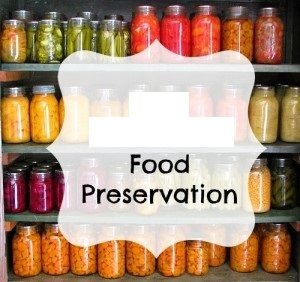Food preservation usually involves preventing the growth of bacteria, fungi (such as yeasts), or other micro-organisms (although some methods work by introducing benign bacteria or fungi to the food), as well as retarding the oxidation of fats that cause rancidity. Food preservation may also include processes that inhibit visual deterioration, such as the enzymatic browning reaction in apples after they are cut during food preparation.
Many processes designed to preserve food will involve a number of food preservation methods. Preserving fruit by turning it into jam, for example, involves boiling (to reduce the fruit’s moisture content and to kill bacteria, etc.), sugaring (to prevent their re-growth) and sealing within an airtight jar (to prevent recontamination). Some traditional methods of preserving food have been shown to have a lower energy input and carbon footprint, when compared to modern methods.[1]
Maintaining or creating nutritional value, texture and flavor is an important aspect of food preservation, although, historically, some methods drastically altered the character of the food being preserved. In many cases these changes have come to be seen as desirable qualities – cheese, yogurt and pickled onions being common examples.



